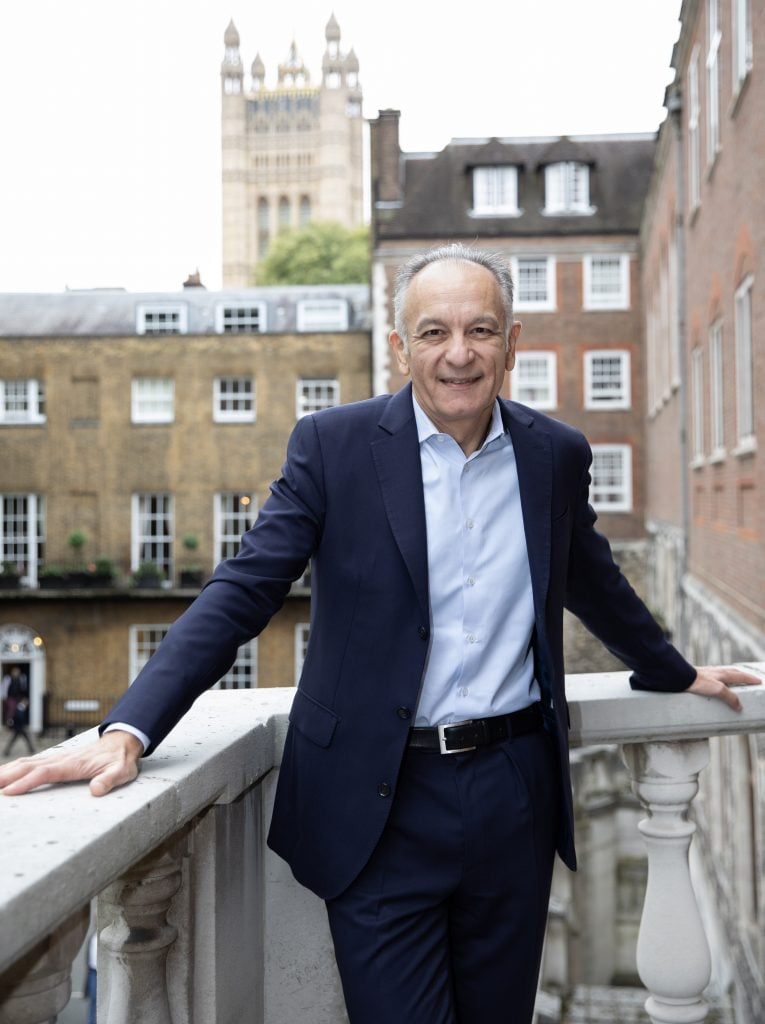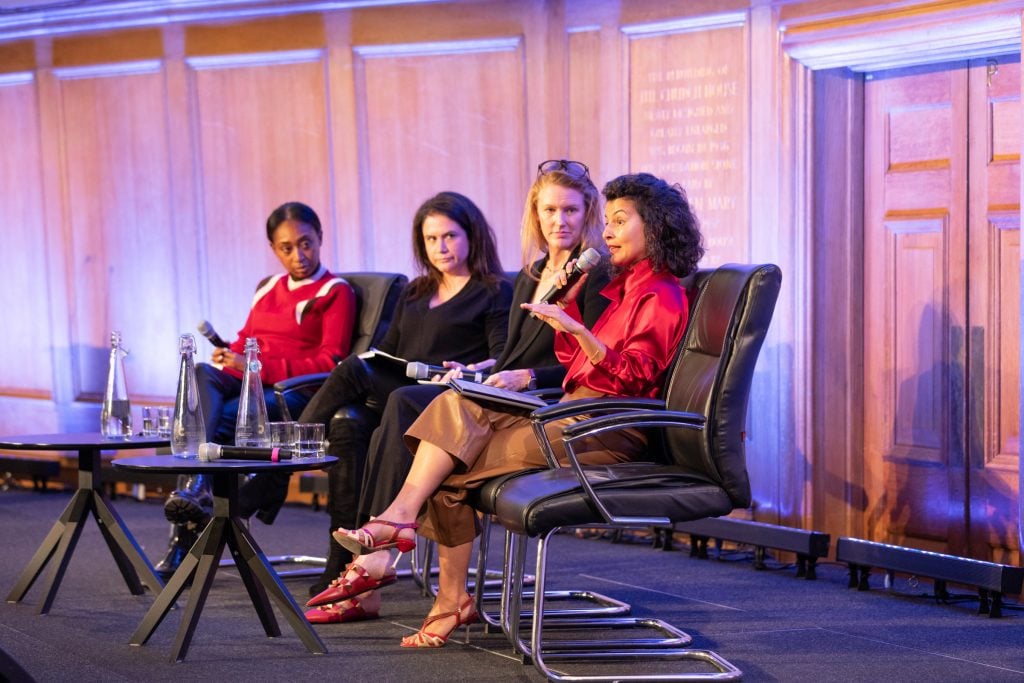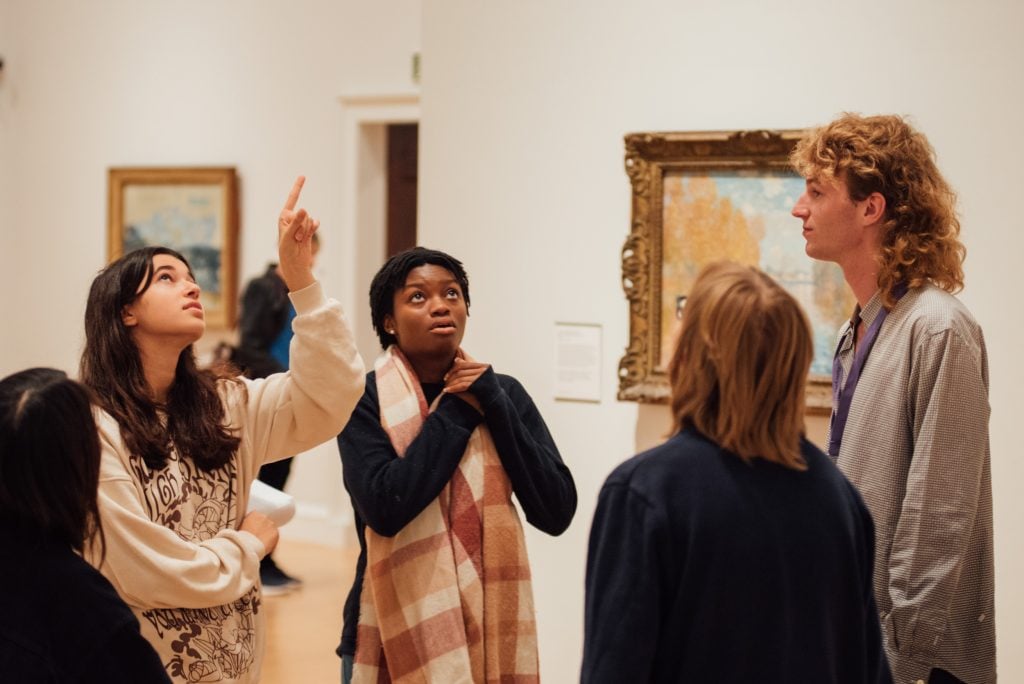Market
Can Britain’s Art Market Bounce Back? 5 Takeaways From the Art Business Conference in London
Industry insiders invoked the legacy of 'Cool Britannia' under the last Labour government while addressing the 'bureaucratic nightmares' of today.

Industry insiders invoked the legacy of 'Cool Britannia' under the last Labour government while addressing the 'bureaucratic nightmares' of today.

Margaret Carrigan

A version of this article originally appeared in The Back Room, our lively recap funneling only the week’s must-know art industry intel into a nimble read you’ll actually enjoy. Artnet News Pro members get exclusive access—subscribe now to receive the newsletter in your inbox every Friday.
Optimism abounded after the Labour Party swept the U.K.’s July election, but there’s been nothing but pessimism (or maybe just realism) out of 10 Downing Street ever since.
Many in the culture sector have been willing the onset of another “Cool Britannia” movement under the new government—a reference to the cultural phenomenon of the late 1990s under a previous Labour leader, Tony Blair, which brought the world everything from the Spice Girls and David Beckham to the YBAs. And it almost seemed like history would indeed repeat itself when Oasis announced a reunion tour a few weeks ago, but Chancellor of the Exchequer Rachel Reeves has been insistent that, unlike the ’90s, there is no money in the country’s coffers. In fact, there’s a £22 billion ($28.8 billion) budgetary black hole that is going to make things worse before they get better.
Such was the backdrop to London’s Art Business Conference on September 10, where speakers ranging from Christie’s CEO Guillaume Cerutti to Chris Bryant, the recently appointed minister of state for the department of culture, media, and sport (DCMS), convened to discuss the state of the U.K. art industry. To sum up the day in just a few words, it would suffice to say: Britain is broke. But is there a way to build its culture sector back up? Here are our five key takeaways from the conference.
1. There’s a Big Tax Problem
One major point of discussion since Labour came to power is how proposed tax hikes may lead to a millionaire drain from the U.K. as they flee to countries with lower tax rates. Although Christie’s canceled its London summer sales this year, Cerutti maintained that any wealth exodus from Britain would not have a “seismic” effect on sales there. Even as Paris’s marketplace has grown, he said that, concerningly, Europe overall has been on the back foot globally, and that within the last decade or so, the number of buyers from the region (including the U.K.) fell 37 percent. Over the same period, the number of buyers in the U.S. and Asia has grown by roughly 30 percent.

Christie’s CEO Guillaume Cerutti at the Art Business Conference, London 2024. Photo: David Owens.
But issues with the country’s policies extended beyond just concerns over a wealth tax. The U.K.’s Temporary Admission scheme—introduced after Brexit to suspend import Value Added Tax (VAT) on goods, including art and antiquities, when they are being re-exported—has been a “bureaucratic nightmare,” according to Martin Wilson, the recently appointed chairman of the British Art Market Federation (BAMF). Why? Because it requires dealers to guarantee VAT before the destination of the artwork is known. He proposed that the government emulate the U.S. with a destination tax.
2. Proportionality Is Key
BAMF’s Wilson also said that “proportionality is key” when it comes to regulation in the U.K. art market, adding that recent anti-money laundering legislation (AML) was like “using a sledgehammer to crack a nut” for many dealers. That sentiment was echoed by Liz Chilcott, a representative of the Society of Fine Art Auctioneers, who said that the big three houses have entire departments devoted to AML regulation and essentially operate as banks themselves. However, most auction businesses are small, regional outfits and “simply don’t have the staff or time” to navigate the laws, nor do the price levels they are selling at generally warrant the same kind of regulation, Chilcott said.
3. Small Galleries Need Big Support
Overregulation in the U.K., as well as macroeconomic factors like inflation and the country’s cost-of-living crisis, have also put smaller galleries under pressure, leading to issues of “asymmetry” in the art world. Rakeb Sile, the co-founder of Addis Fine Art, said that “80 percent of business is done by 10 percent of the galleries,” referencing larger mega galleries, which leaves “90 percent of galleries fighting for 20 percent of the market.” She added that small galleries are the “investment engine” of the art trade, but once an artist’s career starts to take off and the gallery starts to see a return on that investment, they are poached by a larger outfit.

Addis Fine Art founders Mesai Haileleul and Rakeb Sile. Courtesy of Addis Fine Art.
How can smaller galleries be fairly rewarded for what they contribute to the art ecosystem? Sile, whose firm focuses on art from the Horn of Africa, argued that mega-galleries should collaborate with smaller, specialized dealers who are subject-matter experts when they take on an artist who is “ready to go blue chip.”
That was a sentiment echoed by Crispian Riley-Smith, who is a market veteran of 30 years specializing in Old Master drawings. He is now managing director and CEO of Art Advisory Group Ltd, which is a new venture that advises on succession planning. He also noted that when a gallery decides to exit the market—which happens frequently these days, often due to economic pressure—dealers think all their value is in their stock, which they bring to auction or sell somewhere else. But there is “plenty of value in their expertise,” he said, adding that dealers should not be shy about monetizing their knowledge or their client base.
4. Funding Is in Crisis
It’s not just commercial businesses that are suffering under the U.K.’s current tax structures. There are also fewer tax incentives to support nonprofits like museums and public galleries in the U.K., especially compared to the U.S., according to Fatoş Üstek, the author of The Art Institution of Tomorrow: Reinventing the Model (2024) and curator of Frieze Sculpture in London. She said that the U.K.’s Gift Aid scheme, which broadly allows individuals to claim back 25p of every £1 (25 percent) they donate to a charity, doesn’t offer as much tax relief as a donation to a 501(c)3-registered nonprofit in the U.S. (According to the Internal Revenue Service, in most cases, the amount of charitable cash contributions U.S. taxpayers can deduct is up to 60 percent of the taxpayer’s adjusted gross income.) The result? The U.K. tallied $10.5 billion in Gift Aid in 2023—or just 1.89 percent of what the U.S. brought in through donations to charities ($557.1 billion).

Charlene Prempeh, Charlotte Appleyard, Jennifer Schipf, and Fatoş Üstek speak on a panel about the future of creativity at the Art Business Conference in London. Photo: David Owens.
Üstek noted that, given the vastly larger population of the U.S. than the U.K., the total amount of charitable giving across the pond would always be higher, but she emphasized that the current Gift Aid system could be improved upon to incentivize public giving, especially as many arts institutions find themselves relying increasingly on private rather than government funding. Speaking of government funding, or the lack thereof, Eliza Easton, the founder of the Erskine Analysis think tank, noted that the U.K. is far behind its European neighbors in terms of cultural spending.
Meanwhile, Charlotte Appleyard, the director of development and business innovation at the Royal Academy of Arts in London, said that the language around funding in the arts “is often couched in [corporate terms like] ‘KPIs’ and ‘deliverables,'” metrics of success that are predicated on a final product and that do not correspond with what artists and institutions often need: time and basic resources to make work and exhibitions. To help institutions keep the lights on, she advocated for the Labour government to implement a tourist levy—a practice standard across much of Europe in which tourists pay a small daily fee, at least part of which is dedicated to the upkeep of cultural institutions and sites—and to better incentivize private patronage.
5. An Emphasis on Education
A major part of Labour’s plan for culture (as minimal as it is so far) has been to reverse declines in art education, and Chris Bryant, the culture minister, reinforced this by saying that the government is committed to putting “more art in schools from early years” and developing more art-business training programs to improve access to culture.

Students at the Courtauld. Photo: Ed Hands, courtesy of AHLU and the Courtauld.
To that end, the Courtauld Institute of Art used the conference to announce its new master’s program in art and business “to equip students with all the skills and knowledge they need to succeed in today’s art market,” according to the school’s director, Mark Hallett. There will be 24 seats available when it begins in 2025. No details were given about its tuition fees, but current M.A. programs at the school range from around £15,000 ($19,700) per year, for U.K. residents, to nearly £30,000 ($39,400) for international students.
Hallet and Bryant did not address issues of chronic underemployment for graduates with arts degrees, the stagnant wage growth for culture workers in the U.K., or the increasingly small pool of jobs in both arts institutions and commercial galleries, due to funding cuts and economic pressure.